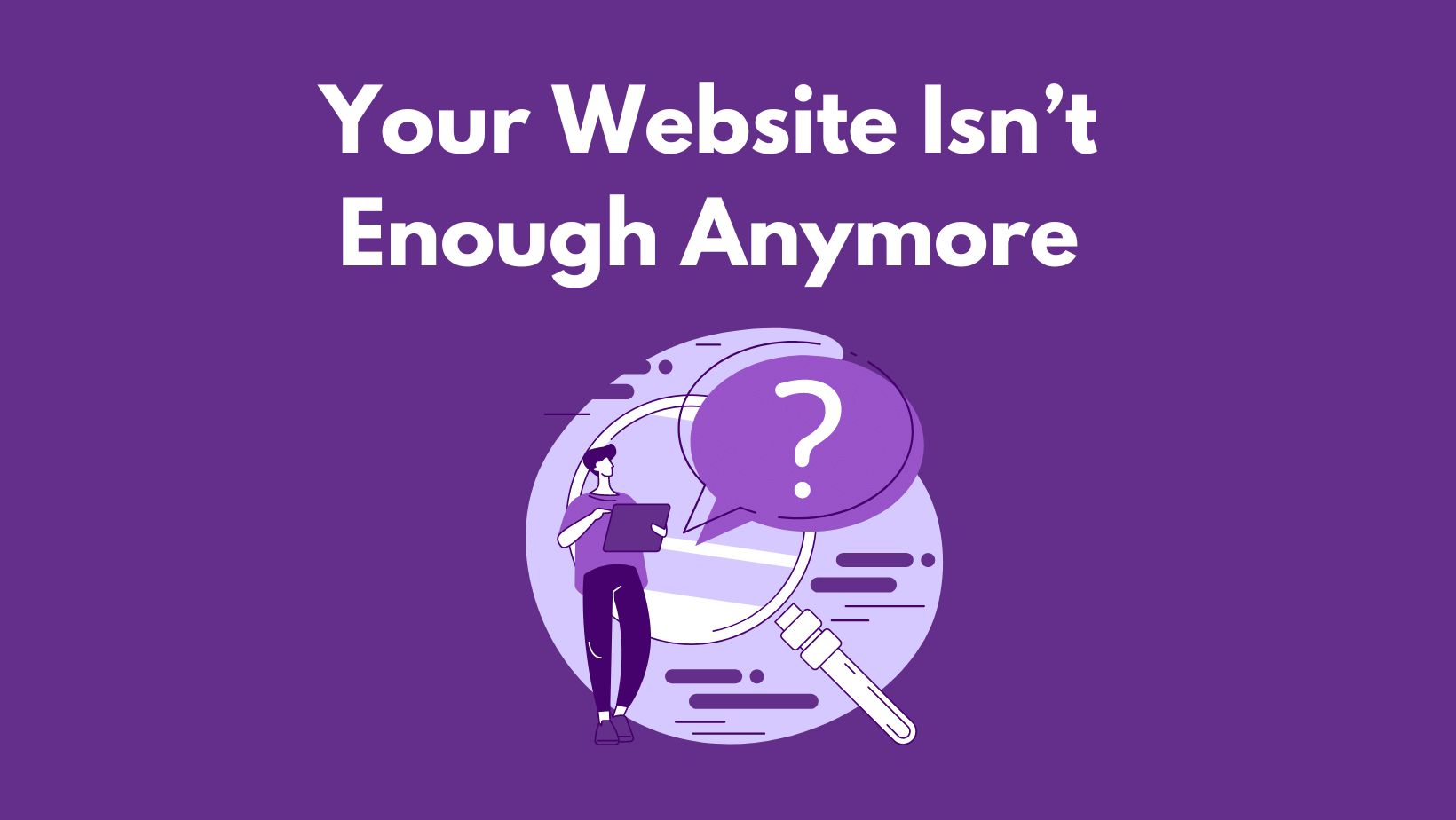Ensure User Satisfaction with a Proper Code Audit
A business needs to conduct a code audit or UX of digital products, websites, or apps. When auditing the code, all digital products have strategic stages of life cycle and development. This blog determines these key processes as to how and what needs to be expected from auditing of the web code. It also identifies how a code audit provides a more significant view, as compared to a normal code of products.

10 Situations That Require a Holistic Code Audit:
There is a spectrum of reasons as to how a code audit can be worth it for a business. Every instance is considerably different from other cases. However, some cases can be highlighted from other recognized cases to identify their worth.
1-When Buying New Apps or Making Investment in Ones:
A person is acquiring or has acquired a firm as a major investor. For this purpose, a code audit is necessary as due diligence. There can also be an instance where businesses have merged and their assets have apps or digital products with them. This product-wise and technology case requires conducting a code audit, enabling the firm to have a better understanding of their status.
The comprehensive code audit and its results will determine a good concept about the state of the business functions. It will also support in answering the question as to how much finance needs to be invested in the application, particularly after addition to the firm’s portfolio. It can further support in answering as to how the product’s potential can be maximsed in a due course.
Moreover, a code audit can be helpful when a business look for a part-business case, sell a business or make an investment. A broad audit allows in presenting the products honestly while determining all digital products in them. It also resolves the obvious problem of legal liability and similar other issues that arise in the future time.
The above cases can better be handled through the code and UX audit simultaneously. There is a need for a full picture when conducting a code audit. For example, a complete guide with users’ needs is required for identifying all assets of the business. It is also necessary for determining the performance of markets and their way of influencing the business aim. A reality check becomes easy when conducting a code audit, particularly regardless of the situation.
2-As Part of the Risk Management Strategy:
Every business’s plan and its major component is its basic risk management strategy. Every business is now confronting unforeseen risks, distracting them to fulfill their planned management goals. Therefore, an in-depth product audit is supported in viewing their possible flaws.
Moreover, it can also influence the business applications while strengthening its business foundation. It then identifies threats of different types while making the business processes easier to be followed. Conducting a comprehensive code audit as a strategic risk management measure helps maintain and improve products’ marketplace positions.

3-Launching a New Product to Market:
Launching a new product to market can be a challenging task to determine its overall purpose. Businesses need to assure that their target users will be availing of the chosen product considering its value. The code audit becomes critical and important, similar to the importance of designing factor and experiencing better.
The factor of UX describes how a user trusts the new product while feeling it better. UX goes opposite with the purpose or simply creates fans for the new app. A challenge also arises when a business outsources the creation of digital products. There further rises the need for checking the application’s quality and its respective measures.
4-Security Check:
The concern for a security check is a major need for every digital product’s owner. A security check for a possible vulnerability becomes necessary when users’ personal information is stored in the system. It mostly happens when the company’s app starts gathering, tracking, or storing sensitive data.
Apart from users’ sensitive data, there rises a need for other different factors, such as mobile app permissions, passwords, email addresses, and other ways where users’ information is stored in the system. Such a checking system is a part of a pre-launching code audit.
There could again be a factor of new malware or other viruses affecting the product’s app or website. A business then needs to carry out a code audit, as a security audit, to assure the products from standing apart and never falling from other best practices.
5-Users are Experiencing Problems:
Users experience problems due to insufficient auditing or no auditing being done in the past. The reason could also include using the software in an unanticipated way. There also rises a problem of exposure issues that were not resolved on time or were unintended before. Whatsoever, it is time to audit if users are experiencing problems as follows:
- The products are crashed.
- Bugs are reported by the users.
- Designs are unresponsive, particularly on mobile devices.
- More problems are rising from updates and patches, rather than their resolution.
- The product is loading slowly. As per Google, every web page should load within 5 seconds using a 3G connection.
6-Product is Being Scaling:
An app working right on a small scale cannot give a guarantee of performance as good while thousands of users are connected to it. An audit becomes necessary when an app or website is accessed by 1000s of users. The right scaling strategy is to facilitate a new market or a large audience.
A company may be having its app or website’s technical aspects and code up to the right level. However, there rise problems with the user experiences when a website loads for more than five seconds. The factor of mobile version also comes under a problem due to mobile-based bandwidth being unsupported for the respective countries.

7-To Avoid Technical Debt:
Similar to the development work, it could be a difficult task to upgrade or change the app functionality with the user interface requirement. For example, modernizing the website or app or simply adding new functionality into it could have a technical glitch linked with it.
A leading way to resolve this issue is to carry out a holistic UX and code audit. It becomes necessary to assure the product’s functionality is working fine as well as other complications being resolved on time. The entire work depends on the situational work, making the changes in the framework used to develop the website or app systematically. This entire work resolves all issues, as may be rising in the future.
8-Getting More Value from Existing Assets:
The process of getting more value from existing assets requires a thorough optimization of current digital products. The UX should be improved to streamline the functionality of the product, such as the website or an app. It supports in developing a business reputation and enhancing user levels.
It is generally a prior activity at different times. A code audit is a strategic framework for determining possible enhancement or new development, thereby opening a clear direction for the business value.
9-The Product is Old:
It is a simple thing that the product becomes old to function in the best manner. For example, there is a digital product that starts functioning with less performance due to untouched or not serviced for two years. There is a lot of room for improvement for that digital product. A failure to redevelop the product can create issues in performance, such as due to technical debt, security issues, or typical old software.
10-Changing Software Development Service Provider:
In the case of software improper working, the right strategy is to change the software development service provider to a new one. It helps in improving the product, app, or website life cycle while increasing value for the business. Moreover, an extended code audit becomes necessary at this stage, making the company feel a good experience from the new software partner.
Not All Code Audits are Useful:
It is pertinent to note that not all code audits are useful. Businesses should run a standard-based code review of their websites and apps, enabling them to identify different possible vulnerabilities. It gives a general review of the product, both concerning the uses and insights of the product. A code audit missing the essential elements above cannot get a true business value.
The code audit should be done for all mobile applications, webs, and other digital products alike. This code audit work best in a different environment, such as designs, UI, UX, and other diversified elements of codes. It identifies bugs that exist in the code and is also annoying for the whole web system.
A much deeper insight could be achieved through a proper code audit. The scope of the audit should be properly defined with different usable and design problems. This strategic process can enable auditors to enhance the future of the digital products while streamlining the entire performance of the product.
A code audit is conducted to identify better ways of performance. It is initiated at every level of performance, leaving no chance for any technical issue afterward. It then reduces the flaws as well as ends up risks that might exist in the designing of UX aspects. It also saves the product of the website and app from suffering poor performance.
A spectrum of functionalities is covered under a holistic code audit. For example, it includes a complete image of the product. It covers the maintenance forecast, scalability, access issues, storage, database, and architecture. It facilitates an evaluation of readiness to get identified requirements. It solves challenges and problems that are faced by the users.
Moreover, it considers all the questions that arise problems of accessibility and performance. It solves all intended problems while setting up a true business value. It facilitates the product owner with each of their essential needs, such as conducting a proper code audit, reporting all associated issues, and resolving all fundamental problems.
Furthermore, it serves businesses with their every security update. It saves the product, website, or app from hacking. It resolves all the existing vulnerabilities. It serves more than a coding issue, such as saving from hacking incidents and securing the reputation and brand of the product and firm.

It then provides an obsolescence report determining how audit tools and technology will be used relating to the specific product. It then helps in meeting the best practices while fulfilling all industry standards.
A proper code audit is a big part of the above-mentioned criteria. All aforesaid data and information are potential indicators of future-based technical debts. The cost of putting things right every day and all the time could be a better concept for all the above processes.
The properly conducted code audit can drive businesses and their website, app, and product to better functionality. It can save the business product from poor execution, unhealthy experience, and an obsolete factor. It can finally recommend users to consume the product more increasingly and actively. It can then drive businesses to rework the design factors, thereby fixing all code problems once in for all.







